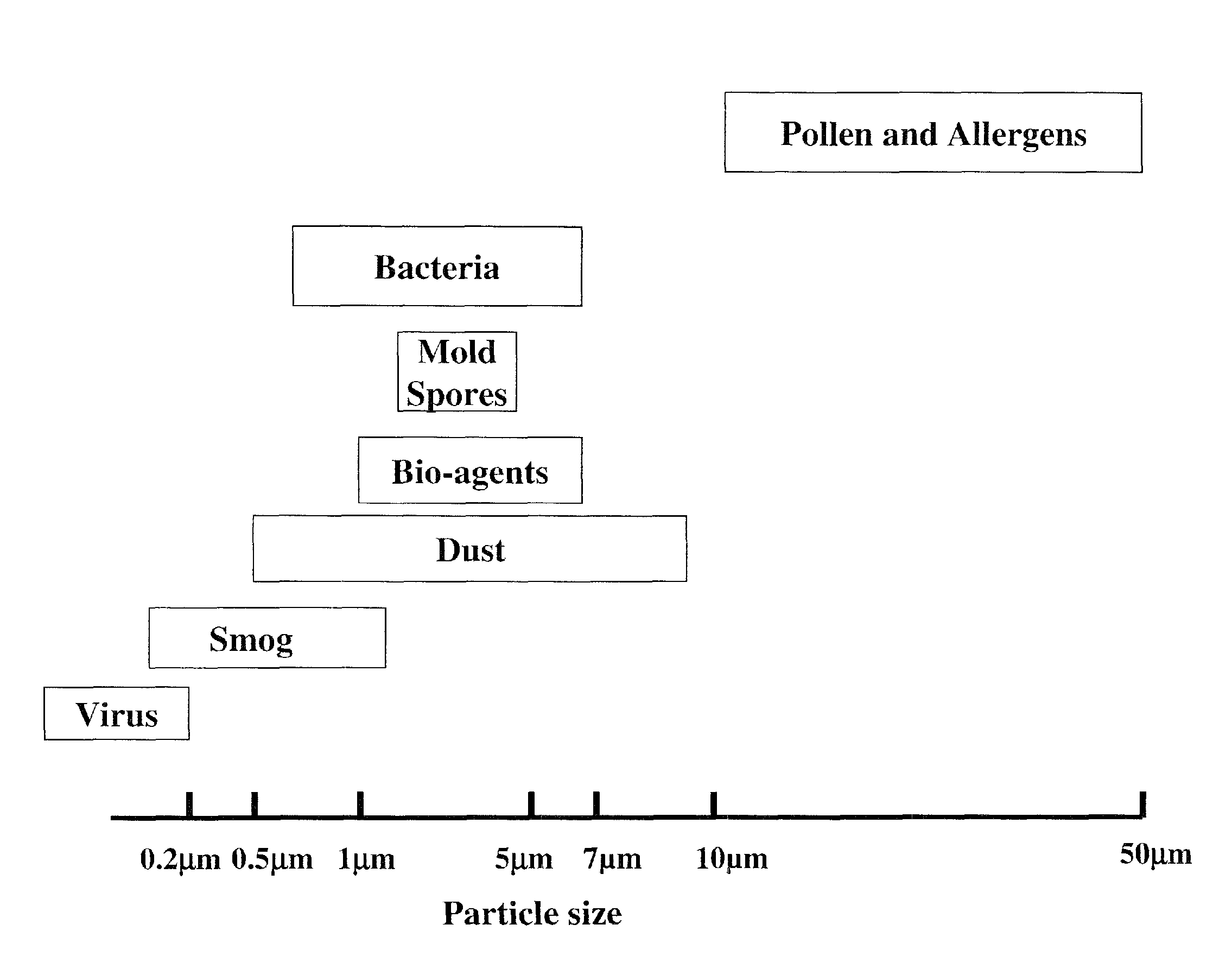Method for the detection of biologic particle contamination
a technology for biologic particles and detection methods, applied in the direction of luminescent dosimeters, optical radiation measurement, instruments, etc., can solve the problems of inability to locate probable sources of contamination in real-time, the quantity of published literature that shows substantial limitations of traditional culture and plate counting methods, and the use of expensive and delicate instruments. to achieve the effect of preventing contamination in clean environments
- Summary
- Abstract
- Description
- Claims
- Application Information
AI Technical Summary
Benefits of technology
Problems solved by technology
Method used
Image
Examples
Embodiment Construction
[0015]The methods and systems of the present invention can be used to detect the presence of particles in an environment and to correlate the detection of the particle with an event in the environment so that the source, or most probably source, of the particles can be identified. The methods and systems are particularly useful for detecting particulate contamination in controlled environments, determining sources of contamination, and also in the prevention of contamination in such environments.
[0016]In one embodiment of the present invention, the methods and systems can be used to detect and identify biologic and non-biologic particles in a controlled environment, and to further provide methods to identify the source of, or most probable source of, any detected biological particles. Such methods and systems are particularly useful for monitoring clean room environments, for example, pharmaceutical clean rooms, for biological contamination and for determining probably contamination...
PUM
| Property | Measurement | Unit |
|---|---|---|
| size | aaaaa | aaaaa |
| wavelength | aaaaa | aaaaa |
| wavelength | aaaaa | aaaaa |
Abstract
Description
Claims
Application Information
 Login to View More
Login to View More - R&D
- Intellectual Property
- Life Sciences
- Materials
- Tech Scout
- Unparalleled Data Quality
- Higher Quality Content
- 60% Fewer Hallucinations
Browse by: Latest US Patents, China's latest patents, Technical Efficacy Thesaurus, Application Domain, Technology Topic, Popular Technical Reports.
© 2025 PatSnap. All rights reserved.Legal|Privacy policy|Modern Slavery Act Transparency Statement|Sitemap|About US| Contact US: help@patsnap.com



